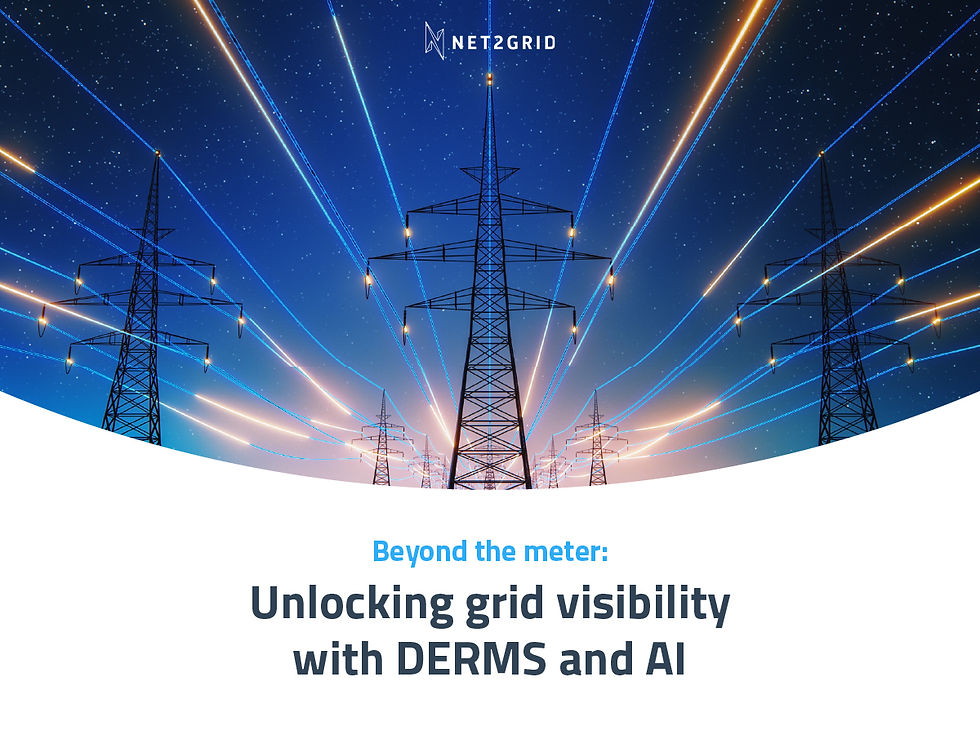Beyond the meter: Unlocking grid visibility with DERMS and AI
- Mirka Karra

- Aug 21, 2025
- 2 min read

Energy companies are at a turning point. The global drive toward decarbonization and the rapid growth of distributed energy resources (DERs) like rooftop solar, electric vehicles (EVs), and home batteries are reshaping how the grid operates. Traditionally, utilities managed a one-way power flow from centralized plants to consumers. Today, they face a dynamic, two-way system with thousands of small, decentralized sources. To meet ambitious net-zero targets while maintaining reliability, utilities are turning to a critical innovation: the Distributed Energy Resource Management System (DERMS).
What is a DERMS?
A DERMS is a software platform that enables utilities to monitor, manage, and optimize DERs. Acting as a “digital brain,” it connects utility systems with diverse resources: solar panels, EV chargers, smart thermostats, and more, ensuring grid stability.
DERMS evolved from Demand Response Management Systems (DRMS), which primarily handled behind-the-meter loads. Modern DERMS go further, coordinating both generation and storage assets like solar inverters and batteries. Two main types exist:
Grid DERMS: Focused on utility-scale and aggregated resources, ensuring overall grid reliability and creating dispatch opportunities.
Edge DERMS: Concentrates on consumer-level assets, aggregating residential and commercial DERs located behind-the-meter to optimize both grid and asset performance and maximize owner benefits.
Challenges in a DER-Integrated Grid
While DERs are key to decarbonization, their integration brings hurdles:
Infrastructure limits: The grid wasn’t built for two-way power, leading to voltage and protection issues.
Operational complexity: A growing mix of DER technologies makes coordination difficult.
Data overload: Massive streams of real-time DER data require advanced forecasting and flexibility analysis.
Cybersecurity risks: More connected devices increase exposure to potential attacks.
Interoperability gaps: Lack of common standards complicates integration.
How NET2GRID EnergyAI® helps
The NET2GRID EnergyAI® technology addresses these challenges by giving utilities real-time visibility into residential DERs and their impact on the low-voltage grid. Its capabilities include:
Enhanced Grid Visibility: Granular insights into solar PVs, EVs, and other assets, enabling more accurate digital twins of the grid.
Smarter Capacity Planning: Better forecasts of EV and solar impacts support future grid readiness.
Non-Wires Alternatives: Identified areas with high edge DER penetration can be translated into grid stress points where more focus should be given to enroll DER owners into load-shifting programs as a cost-effective alternative to infrastructure upgrades.
Streamlined Operations: Automated monitoring reduces outages and operational costs.
By harnessing advanced analytics and AI, EnergyAI® helps utilities move from reactive, forecast-based planning to proactive, data-driven management. This shift not only improves grid reliability but also accelerates the transition to a cleaner, more resilient energy future.

